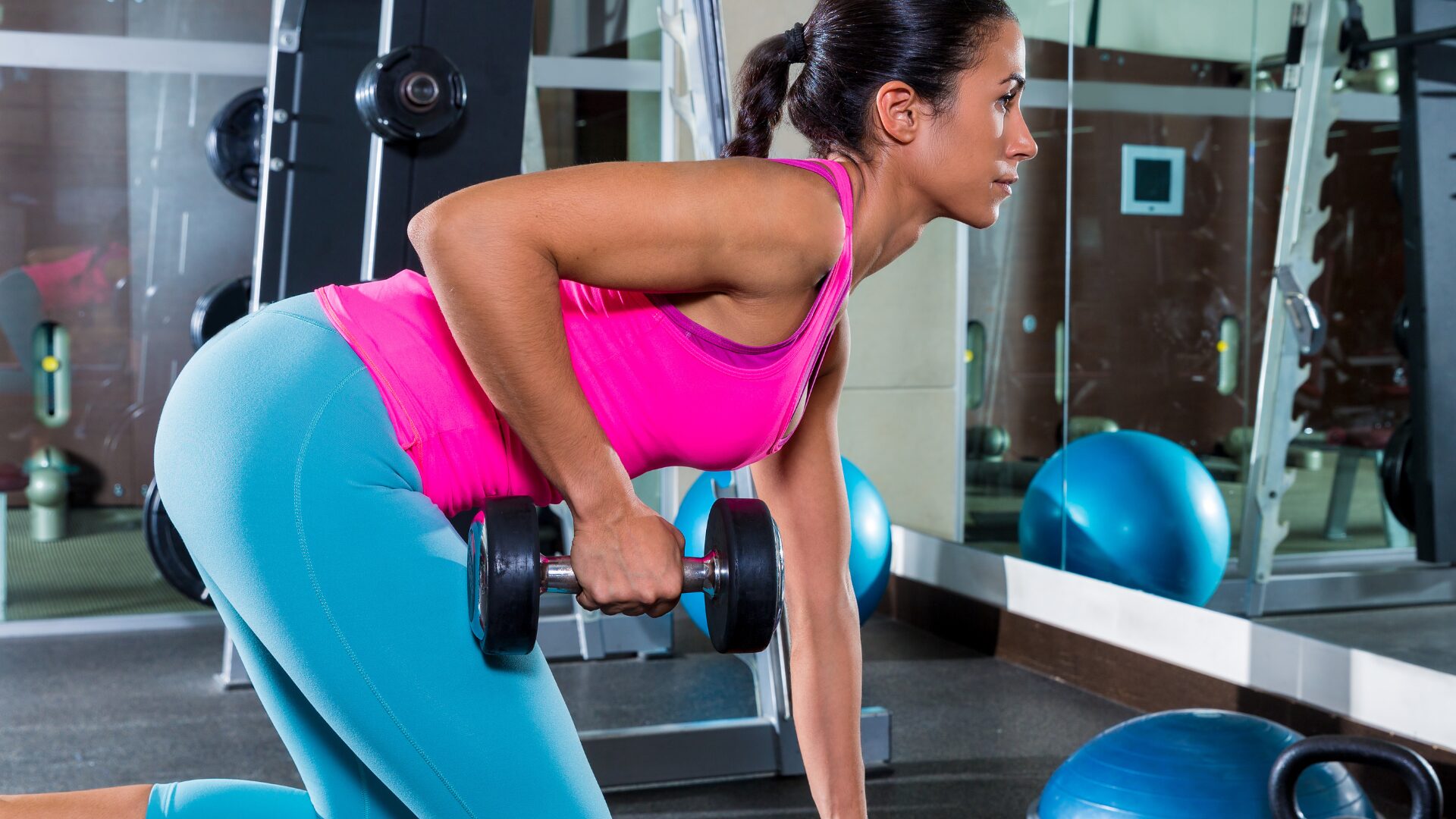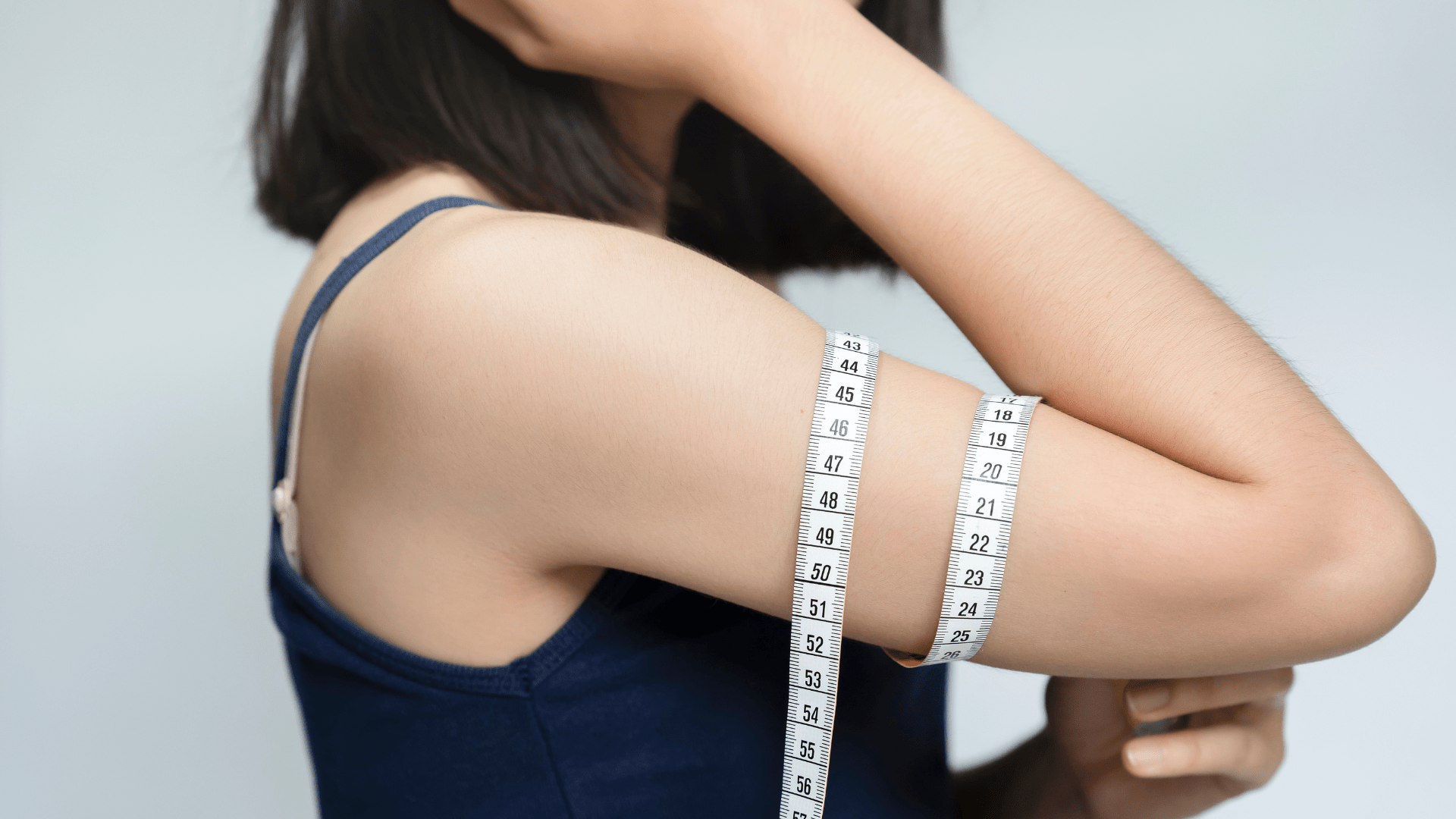Dumbbell Rows: Strengthen Your Back

If you’re looking for a simple and effective way to strengthen your back, look no further than dumbbell rows. This versatile exercise targets the muscles in your upper back, helping to improve posture and prevent injuries. By holding a dumbbell in one hand and pulling it up towards your chest, you engage the muscles in your back, providing a challenging workout that can be easily modified to suit your fitness level.
Discover the benefits of dumbbell rows and add them to your workout routine for a stronger, more resilient back.
Benefits of Dumbbell Rows
Strengthening the Muscles of the Back
Dumbbell rows are an excellent exercise for strengthening the muscles of the back. By targeting the muscles in the upper and middle back, such as the latissimus dorsi, rhomboids, and trapezius, dumbbell rows can help improve overall back strength and stability. Strengthening these muscles not only enhances your athletic performance but also helps in daily activities that require back strength, such as lifting heavy objects or maintaining good posture.
Improving Posture
One of the most notable benefits of incorporating dumbbell rows into your workout routine is the improvement in posture. In today’s sedentary lifestyle, it’s easy to develop poor posture habits due to long hours spent sitting or slouching. Dumbbell rows target the muscles responsible for maintaining proper spinal alignment, such as the rhomboids and trapezius. By strengthening these muscles, dumbbell rows can help correct rounded shoulders and promote a more upright posture.
Enhancing Overall Upper Body Strength
Dumbbell rows are a compound exercise that not only targets the back muscles but also engages other upper body muscles, such as the biceps. This exercise can help improve overall upper body strength by targeting multiple muscle groups simultaneously. By incorporating dumbbell rows into your routine, you’ll be able to develop a stronger and more balanced upper body, which will positively impact various other exercises and activities.
Proper Technique for Dumbbell Rows
Starting Position
To perform dumbbell rows with proper technique, start by standing with your feet shoulder-width apart and a slight bend in your knees. Hold a dumbbell in each hand, allowing your arms to hang naturally by your sides. Your palms should be facing your body, and your back should be straight, with your core engaged. The starting position is crucial for optimal execution of the exercise.
Execution
To execute a dumbbell row, begin by slowly lifting one dumbbell off the ground, keeping your elbow close to your body. Pull the dumbbell up towards your chest while squeezing your shoulder blades together. Keep your back straight and avoid using momentum to lift the weight. Focus on using your back muscles to perform the movement. Lower the dumbbell in a controlled manner to the starting position, and then repeat the movement on the other side.
Common Mistakes to Avoid
When performing dumbbell rows, it’s important to be mindful of common mistakes that can compromise the effectiveness of the exercise:
- Using momentum instead of controlled movements: It’s essential to focus on using your back muscles to lift the weight rather than relying on momentum. Slow, controlled movements ensure that the targeted muscles are engaged and working effectively.
- Round shoulders and hunching the back: Maintain proper form throughout the exercise by keeping your back straight and shoulders back. Avoid hunching the back or allowing your shoulders to round forward, as this can put unnecessary strain on your spine.
- Not fully extending the arm when rowing: To fully engage the targeted muscles, make sure to fully extend your arm when rowing the dumbbell towards your chest. Failing to do so may limit the benefits of the exercise and reduce the range of motion.
Muscles Targeted by Dumbbell Rows
Latissimus Dorsi
Dumbbell rows primarily target the latissimus dorsi, also known as the “lats.” These muscles are located in the middle and upper back and play a crucial role in various pulling movements. Strengthening the latissimus dorsi helps improve overall back strength and stability, making it easier to perform exercises such as pull-ups, deadlifts, and bent-over rows.
Rhomboids
The rhomboids are muscles located between the shoulder blades. They are responsible for retracting the scapulae, which helps improve posture and maintain proper spinal alignment. Dumbbell rows effectively target the rhomboids, allowing for increased strength and stability in the upper back.
Trapezius
The trapezius muscle is a large triangular muscle that extends from the base of the skull to the middle of the back. It is responsible for multiple movements, including scapular retraction and elevation. Dumbbell rows engage the trapezius muscles, helping to improve upper body strength and stability.
Biceps
While the primary focus of dumbbell rows is the back muscles, they also engage the biceps to a certain degree. As you lift the dumbbell towards your chest, your biceps act as secondary muscles, assisting in the movement. This additional activation of the biceps helps improve overall upper body strength and adds an extra challenge to the exercise.
Variations of Dumbbell Rows
One-Arm Dumbbell Rows
One-arm dumbbell rows are a variation of the standard dumbbell row, where you perform the exercise using only one arm at a time. This variation allows for a more focused and unilateral training, which helps address any muscle imbalances between the left and right sides. One-arm dumbbell rows are useful for developing further back strength, stability, and symmetry.
Inverted Row
The inverted row, also known as a body row, is another variation of the dumbbell row. Instead of using dumbbells, this exercise is performed using a barbell or a suspension trainer. Inverted rows target the same muscles as traditional dumbbell rows but offer a different plane of movement. This exercise is beneficial for individuals who lack access to dumbbells or prefer a different challenge.
Renegade Rows
Renegade rows are an advanced variation of dumbbell rows that incorporate core stability and coordination. To perform renegade rows, start in a high plank position with your hands resting on the dumbbells. Alternating between arms, row one dumbbell towards your chest while maintaining a stable core and avoiding any rotation in the hips. Renegade rows are an excellent exercise for strengthening the back, core, and shoulder stabilizers.
Training Frequency and Sets/Reps
Determining the Appropriate Weight
When starting with dumbbell rows, it’s essential to choose an appropriate weight that challenges the targeted muscles without sacrificing form. Select a weight that allows you to perform the exercise with proper technique while still feeling fatigued by the end of the set. It’s always better to start with a lighter weight and gradually increase as your strength and form improve.
Recommended Sets and Reps
For most individuals, performing 2-3 sets of 8-12 repetitions of dumbbell rows is a good starting point. This rep range helps promote muscular endurance and hypertrophy (muscle growth) while allowing for proper form and control throughout each repetition. As you become more experienced and comfortable with the exercise, you can progress by increasing the resistance or adjusting the sets and reps to meet your specific goals.
Frequency of Training
The frequency of training dumbbell rows depends on various factors, including your overall training program, recovery capacity, and individual goals. As a general guideline, incorporating dumbbell rows into your routine 1-2 times per week can yield significant benefits for back strength and posture. However, it’s important to listen to your body and allow for adequate rest and recovery between training sessions.
Tips for Maximizing the Effectiveness of Dumbbell Rows
Maintain Proper Form
Proper form is crucial when performing dumbbell rows to ensure maximum effectiveness and avoid potential injuries. Focus on maintaining a straight back, engaging your core, and using controlled movements instead of relying on momentum. By prioritizing form, you’ll significantly enhance the overall benefits of the exercise.
Engage Your Core
Engaging your core is essential during dumbbell rows as it provides stability and support for your spine. Keep your core muscles activated throughout the exercise by drawing your navel towards your spine. This will help maintain proper spinal alignment and prevent excessive stress on your lower back.
Use Controlled and Slow Movements
Performing dumbbell rows with controlled and slow movements allows for better muscle engagement and activation. Avoid using jerky or fast motions, as this can reduce the effectiveness of the exercise and increase the risk of injury. Stay mindful of each repetition, focusing on targeting the intended muscles with intentional, controlled movements.
Breathe Correctly
Breathing correctly during dumbbell rows helps maintain optimal stability and oxygenation of your muscles. Inhale before initiating the row, and exhale as you pull the dumbbell towards your chest. Consistent breathing allows for better control of the movement and ensures proper oxygen flow to your muscles.
Safety Considerations
Warm-up Exercises
Before performing dumbbell rows or any other exercise, it’s crucial to warm up properly to prepare your muscles for the upcoming workout. Start with a 5-10 minute dynamic warm-up to increase blood flow and loosen up your joints. Incorporate exercises such as arm swings, shoulder circles, and dynamic stretches to warm up the muscles you’ll be targeting during dumbbell rows.
Gradually Increase Resistance
It’s essential to gradually increase the resistance used for dumbbell rows to avoid overexertion or potential injuries. As your strength improves, incrementally add weight to challenge your muscles and stimulate growth. However, ensure that you are always able to maintain proper form and control throughout the exercise. If you find that your form is compromised, reduce the weight and focus on mastering the movement before progressing further.
Avoid Excessive Weight
While it’s important to challenge yourself during workouts, it’s equally important to avoid using excessively heavy weights that can lead to improper form and potential injury. Start with a weight that allows you to perform the exercise with proper technique and gradually increase as your strength and form improve. Remember that quality of movement always takes precedence over the quantity of weight lifted.
Incorporating Dumbbell Rows into a Full Workout Routine
Choosing Complementary Exercises
When incorporating dumbbell rows into a full workout routine, it’s essential to choose complementary exercises that target different muscle groups. Some exercises that complement dumbbell rows include pull-ups, lat pulldowns, bent-over rows, and reverse flyes. By incorporating a variety of exercises, you can ensure that all major muscle groups of the back are adequately trained.
Creating a Balanced Training Program
To create a balanced training program, it’s important to integrate exercises that target all major muscle groups of the body. In addition to dumbbell rows for the back, include exercises that target the chest, shoulders, legs, and core. A balanced training program helps prevent muscle imbalances, promotes overall strength and stability, and enhances overall fitness and athleticism.
Common Mistakes to Watch Out for:
Using Momentum Instead of Controlled Movements
One of the most common mistakes people make when performing dumbbell rows is using momentum to lift the weight instead of focusing on controlled movements. This not only reduces the effectiveness of the exercise but also puts unnecessary stress on the joints and increases the risk of injury. Remember to prioritize proper form and control throughout each repetition.
Round Shoulders and Hunching the Back
Maintaining good posture is essential during dumbbell rows. It’s common for people to round their shoulders or hunch their backs, especially when using heavy weights. This compromises the alignment of the spine and decreases the engagement of the targeted muscles. Focus on keeping your back straight, shoulders back, and chest lifted throughout the exercise.
Not Fully Extending the Arm When Rowing
To ensure maximum engagement of the back muscles, it’s important to fully extend your arm when rowing the dumbbell towards your chest. Failing to do so limits the range of motion and reduces the effectiveness of the exercise. Aim to fully extend the arm and squeeze your shoulder blades together at the top of each repetition.
Frequently Asked Questions about Dumbbell Rows
➤ Can Dumbbell Rows Help with Back Pain?
Yes, dumbbell rows can help alleviate and prevent back pain when performed with proper form and technique. By strengthening the muscles of the back, including the latissimus dorsi, rhomboids, and trapezius, dumbbell rows can help improve overall back strength and stability, reducing the risk of pain and injury.
➤ Can Dumbbell Rows be Done Without a Bench?
Yes, dumbbell rows can be performed without a bench. The starting position for dumbbell rows involves standing with your feet shoulder-width apart and a slight bend in your knees. From this position, you can perform the exercise by bending forward at the hips and keeping your back straight. Place your non-working hand on a stable surface for support while rowing the dumbbell with the other hand.
➤ Are Dumbbell Rows Suitable for Beginners?
Yes, dumbbell rows can be appropriate for beginners as long as proper form and technique are emphasized. It’s important to start with an appropriate weight that allows for controlled movements and focus on engaging the targeted muscles. Beginners should prioritize learning the correct form before progressing to heavier weights or more challenging variations. Consulting with a qualified fitness professional can help ensure beginners perform dumbbell rows safely and effectively.
Incorporating dumbbell rows into your workout routine can provide numerous benefits, including improved back strength, enhanced posture, and increased overall upper body strength. By following proper technique, targeting the right muscles, and incorporating variations and complementary exercises, you can maximize the effectiveness of dumbbell rows and achieve your fitness goals.
Remember to prioritize safety,
gradually progress, and listen to your
body for optimal results.
Related Posts

No More Flabby Arms: Effective Triceps Workouts for Women
Say goodbye to flabby arms with these targeted triceps workouts for women. Strengthen, tone, and sculpt your arms with exercises designed to deliver visible results.

Enchilada Skillet
This one-pan Enchilada Skillet is a quick, hearty, and flavorful twist on traditional enchiladas—ready in just 30 minutes! Packed with protein, veggies, and bold spices, it’s a perfect weeknight dinner.

Sweat-Proof Makeup for Active Women
Discover the ultimate guide to sweat-proof makeup for active women. Learn the best products, tips, and routines to keep your makeup fresh through any workout.

Cranberry Apple Salad
This fresh and vibrant Cranberry Apple Salad is the perfect blend of sweet, tart, and crunchy! Packed with nutrients and ready in minutes, it’s an ideal side dish or light lunch.






